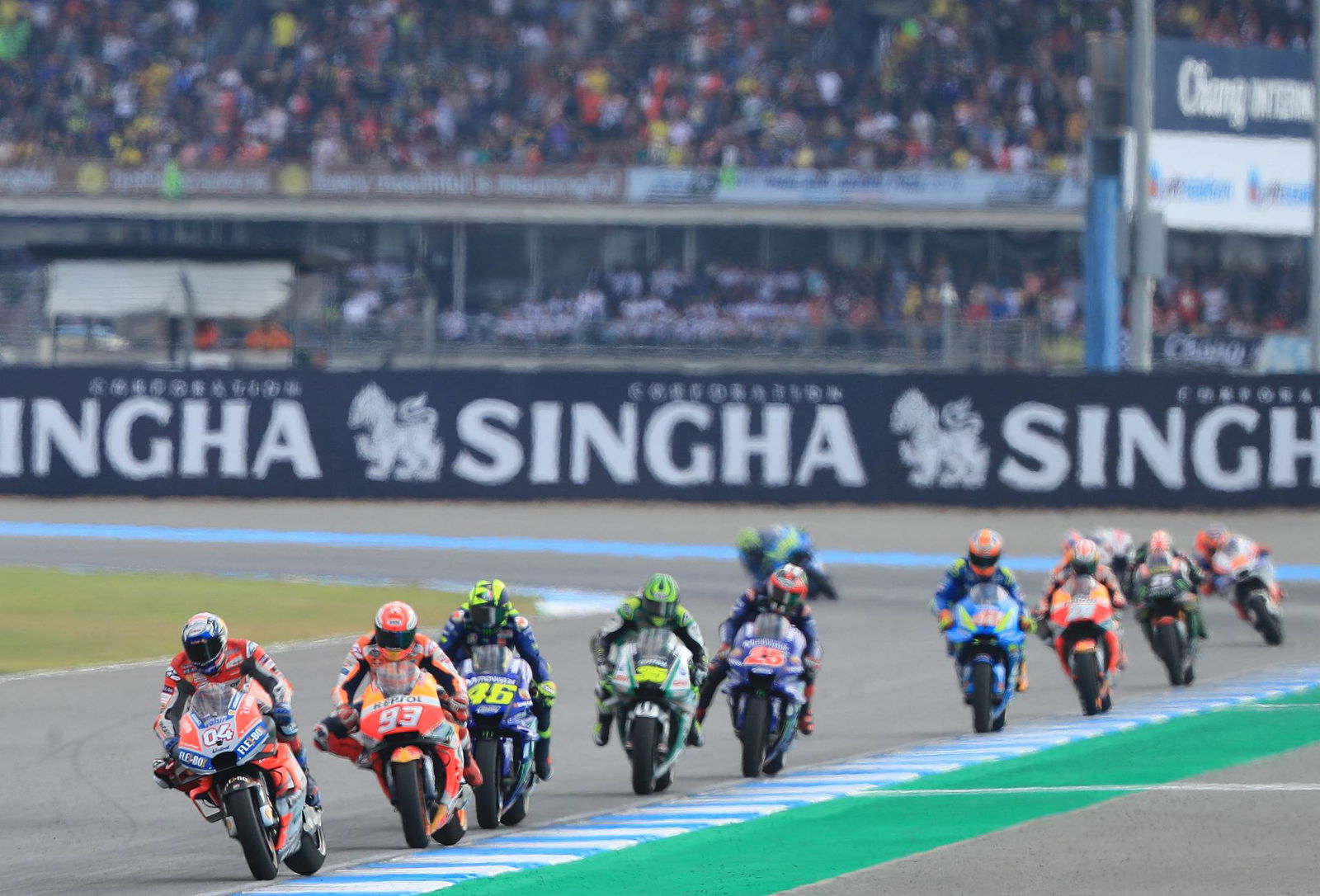Gigi: 'Time to rethink' rider and bike combined weight
With the lightest rider, Dani Pedrosa, having left MotoGP, Ducati's Gigi Dall’Igna feels a combined rider and bike minimum weight would be 'fair for everybody'

Ducati Corse general manager Gigi Dall’Igna feels that, following Dani Pedrosa's retirement, it would be appropriate to reconsider a combined rider and bike minimum weight for MotoGP.
Currently the 157kg minimum weight applies only to the bike, encouraging riders to keep their weight as low as possible to maximise straight-line performance and tyre life.
But given the differences in height, there will always be a significant weight variation.
Pedrosa had been the lightest on the grid at 51kg (height 1.60m), with new factory Ducati team rider Danilo Petrucci the heaviest at 78kg (1.81m).
TIn general, the lower the engine power, the more influence rider weight has on performance. To counter the disadvantage for larger riders, the Moto3 (152kg) and Moto2 classes already use a combined motorcycle and rider minimum weight. The lightest riders therefore have to add ballast to their bikes.
But it’s a more complicated situation in MotoGP, since larger riders can gain by moving their weight for added traction and have more physical strength to control and lever the rumoured 300hp machines.
Indeed, while rivals have often expressed envy at Pedrosa's acceleration out of the corners, he had to make a much bigger effort to stop and change direction while often struggling to get enough load on the tyres.
"I was completely out of the [temperature] range of the tyre working," Pedrosa said after a disasterous wet qualifying at Assen 2017. "Today I don't think you will hear some riders complaining that I'm too light."
Former manager Alberto Puig is adamant the Spaniard would have had a much easier time if he had been the same size as other riders.
"He did a big effort because he is a really small guy and he was fighting with a very big machine," said Puig. "This for me is the most difficult thing he had to handle. But out of his potential and technique he managed to do it. I think this is very impressive."
"I think the riders themselves say there are pluses and minus to being super light," said Yamaha Racing managing director Lin Jarvis. "Maybe you have higher top speed etc, but you have more difficulty to manage the bike in other conditions,"
Yamaha's Valentino Rossi weighs 69kg (1.81m) with team-mate Maverick Vinales 64kg (1.71m).
"We have two riders that are different in height and weight. There are pros and cons: The way that they work the tyre, their riding position," Jarvis added. "But I think every manufacturer can easily adapt to that.
"I don’t think in the MotoGP class there’s a real need [for a combined minimum weight]… There’s certainly no push from our side to go in that direction."
However Dall’Igna, who accepts a combined rider and bike weight would have unfairly penalised Pedrosa, feels the rule should now be looked at again given the Spaniard has retired from the grid.
"Honestly, in the past it was quite difficult to speak about it, also because Pedrosa was in the championship and if you do a rule like [combined weight] for sure you would penalise Pedrosa lot," Dall’Igna said.
"Now, maybe, it's time to rethink a little bit the situation."
Rider weight wasn't such a concern during open tyre competition, but the democratic nature of the single-tyre rule means tyres are chosen (and developed) to suit the majority.
Despite the range of compounds offered by Michelin each weekend, it's impossible to please everyone and those furthest from the weight average can struggle to generate enough load on the tyre (Pedrosa) or with overheating problems (Petrucci and Scott Redding).
"Sometimes the weight is not so important but now in MotoGP, with these tyres, I think weight is one of the problems that in some cases you have to fight with," Dall’Igna said. "I cannot push for it, but honestly I think this [combined weight] would be a fair rule."
Petrucci himself feels that, over an entire season, his size means "a small advantage for 20%" of the time, such as cold or wet conditions, and "80% not".
"Sometimes, especially when it is hot, I have a big disadvantage," he said.
The Italian turned up looking gaunt for the start of pre-season testing this year due to a gruelling winter diet. Petrucci admits it was a step too far, leaving him weak on the bike, but he will try again this winter using a different programme.
"Last year I followed a diet that left me very weak at the first tests, but this winter I want to work more cleverly and arrive in Qatar in a good shape. My aim is to be a fit as possible and to be lighter," Petrucci said before leaving Jerez to start his winter training.
"I will work with Dovi this winter. He follows a different programme that I will try. It's the only thing I can do. I have one shot at the next season, so I am following him, his direction and his experience. He has many seasons and I can only learn from him."
Petrucci's one shot is down to a single year contract with the factory Ducati team. With any change to the weight rules unlikely to happen in time for 2019, he will have to earn a contract extension under the existing regulations.
"Danilo did some very exciting races in the past, so I think that the potential of the rider is really high," said Dall’Igna. "For sure, we have to tune better his physics and his mind to do the final step - that he has to do and that I think he can do."
Jorge Lorenzo, the rider Petrucci is replacing, weighs 65kg (1.71m) while Ducati's double title runner-up Dovizioso weighs 67kg (1.67m).

